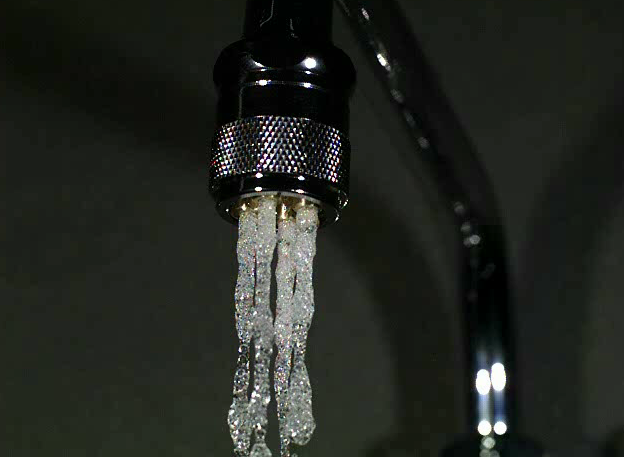
Although over 70 percent of the Earth is covered in water, over 96 percent of that is salty. As anyone who’s gotten a mouthful of ocean water knows, we can’t drink that, and bathing in it is a big no-no. So, we are dependent on the limited fresh water supply, 70 percent of which is used for agriculture. That doesn’t leave much for us, so water conservation has been a hot topic for years, especially in places like Southern California that are suffering from droughts.
Companies all over the world have been coming out with water-efficient faucets and toilets to help, but they have barely made a dent in mitigating the problem, that is, until one Japanese entrepreneur set their mind to the problem. In 2009, a Japanese start-up created a water-saving nozzle that is purported to reduce water usage by up to 95 percent. This could be a life-changing and world-changing invention.
The Osaka-based start-up DG TAKANO invented their novel product “Bubble90” in 2008 and have since been recognized with an array of awards and were showcased on Japanese variety show,”Ga-chiri Monday!” All of this attention is well deserved; with this invention, you could go from using the average 10 liters (2.6 gallons) of water a day, to using only 0.5 liters (0.13 gallons).
With such high efficiency, you’d think it would involve some monster of a device, yet the nozzle is just a small piece that can be attached to almost any normal faucet.
▼ That small nozzle is an intricate piece of metalwork.
The device is designed to force air into the water stream, creating bubbles in the flowing water, and then shooting it out in pulses. It was inspired by the bidet feature on some Japanese toilets.
▼ The tap water is in blue, the air is in orange.
▼ Since the Bubble90 works with flowing water streams, the bubbles look like this, a pocket of air surrounded by water– decreasing the amount of water in each droplet.
You may think that bubbly water wouldn’t clean very efficiently, but the water is high-pressure and although it seems “soft,” it rinses soap off hands and grime off dishes as easily, if not better than traditional faucets, the water emitted by the nozzle said to resemble a succession of small waves on a very fast, small scale.
▼ Scale this to the kitchen sink level and you can imagine how the leftovers on your plate could easily be washed away.
The Bubble90 website presents a graphic showing the efficiency of a normal tap faucet vs. a general water-saving faucet vs. a Bubble90 faucet. The study measured the amount of water used to clean some dishes (depicted in blue) and the cleaning power (depicted by the brown line).
▼ According to their study, not only did the Bubble90 out-clean the other two faucets, it also used significantly less water in the process.
Reduction in water usage, and thus a reduction in water usage fees, has been proven in several test runs in establishments around Japan. For example, an izakaya (dining bar) chain added the Bubble90 to their kitchen sinks, and saw a huge difference in their water bills, going from 2 million yen (US$16,500) a year to 1.5 million yen ($12,500). The shops saw an average of 20-35 percent decrease in water usage.
Another impressive example is of a ramen shop chain, which cut its annual water bill nearly in half, from 1.2 million yen to 660,000 yen ($10,000 to $5,500). The monetary benefit (and water reduction) was apparent almost instantly.
The company offers a few different nozzles for different purposes, such as one for hand-washing, which has the highest reduction of up to 95 percent, but no lower than 80 percent. High-power nozzles, such as those used in industrial kitchens, see a 40-90 percent water-reduction rate.
▼ Different styles to fit different needs.
The nozzles are not only small, easy to use and adjust to preferred pressure levels, but they are easy to maintain and are expected to last for at least 10 years before they need to be replaced. While they are currently used mostly for businesses with really high water usage, there should be a home-use version available soon too.
▼ You can see the tiny bubbles running over this person’s hand.
Even cutting water usage down by 20 or 30 percent is huge, let alone 90 percent, especially when you multiply that by the rest of the world. This kind of air-infusing nozzle could be the future of all faucet technology and a huge player in water-conservation across the globe.
The success of the Bubble90 is also a big step for Japanese start-ups in general, which are kind of uncommon and not well supported. Takano’s drive, persistence and ingenuity will inevitably inspire young entrepreneurs like himself. The press and popularity of DG Takano could bode well for other up-and-coming small companies too.
▼ We’ll leave you with a promotional video where you can see the water in action.
Sources: Ascii Weekly, Bubble90
Images: Bubble90, YouTube (tatsuo sugimoto),Wikimedia Commons (Stéfan Le Dû)


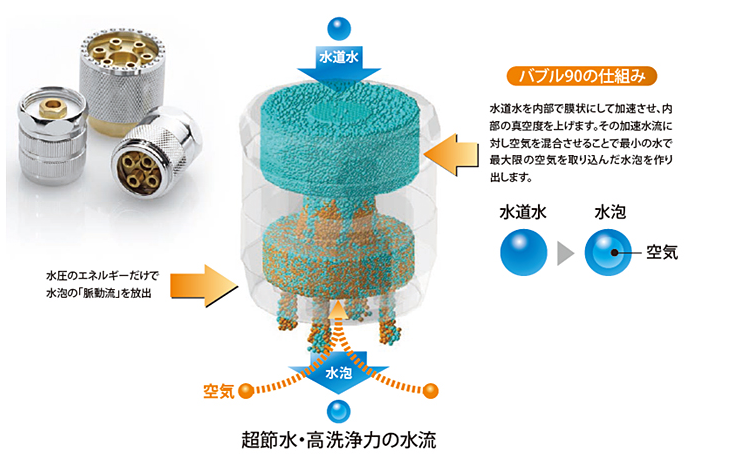
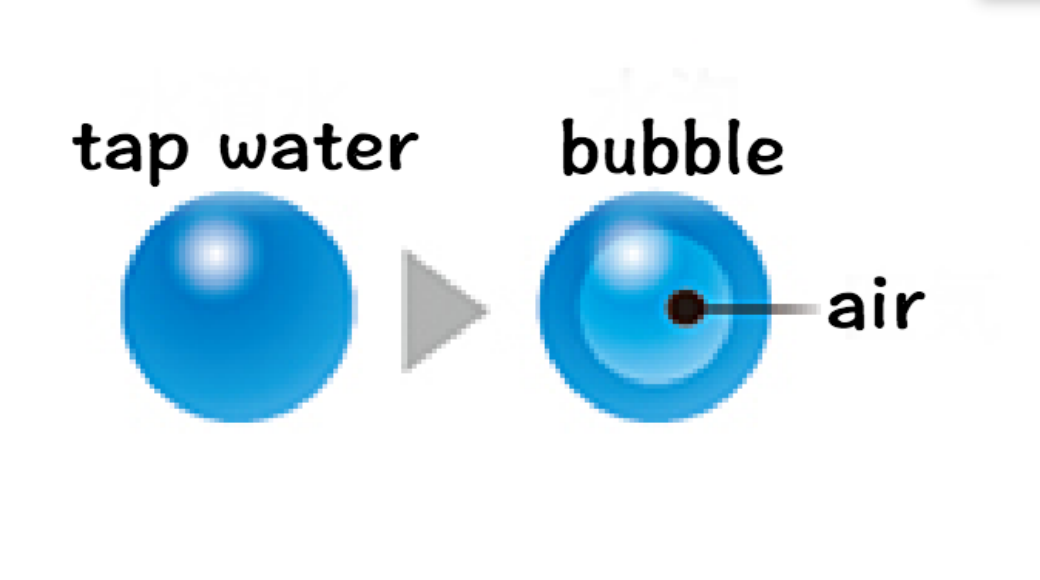
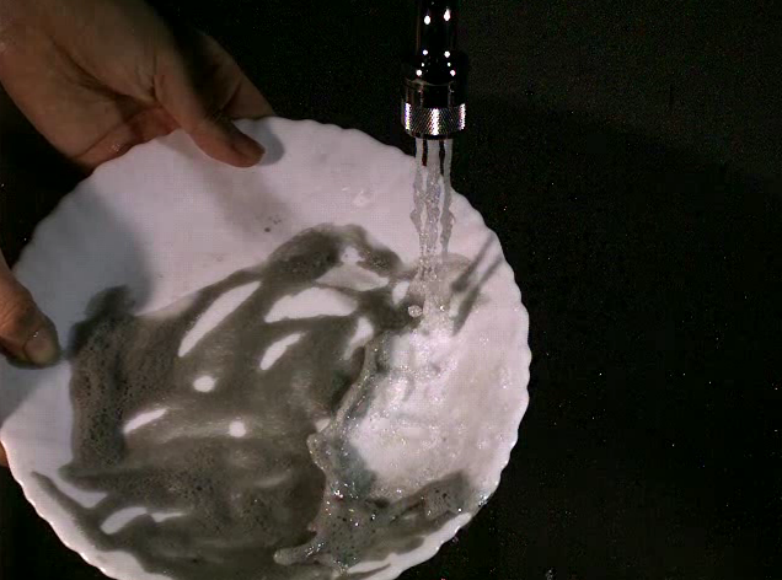
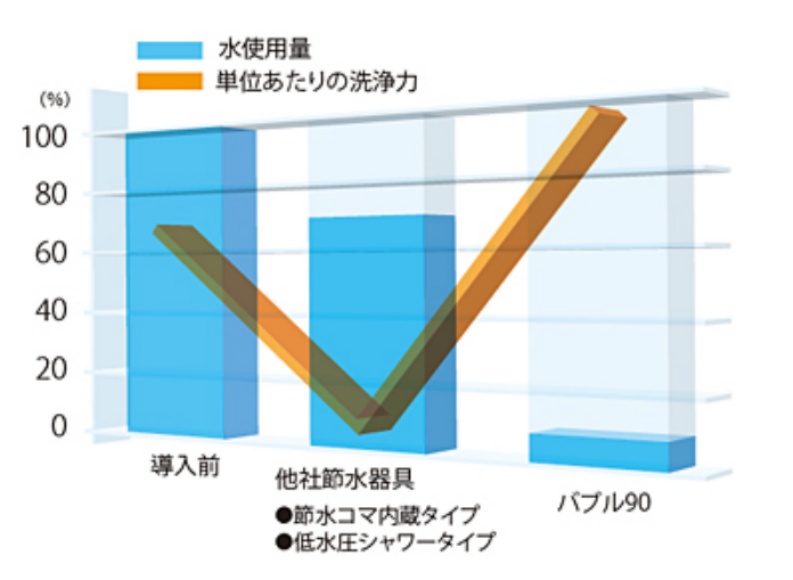
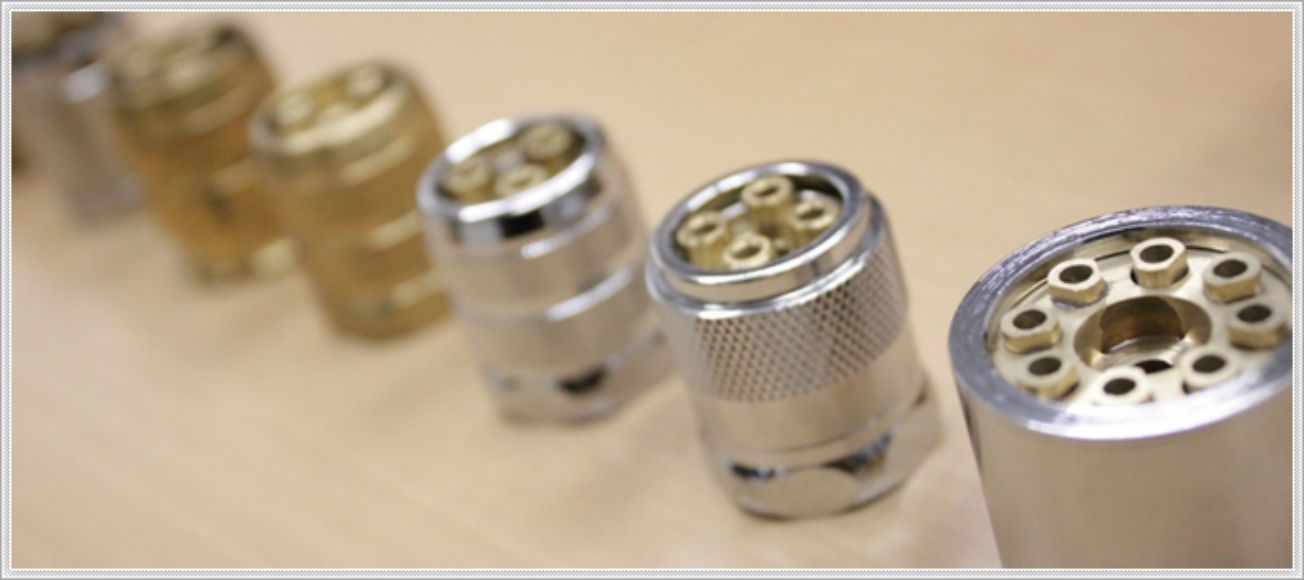
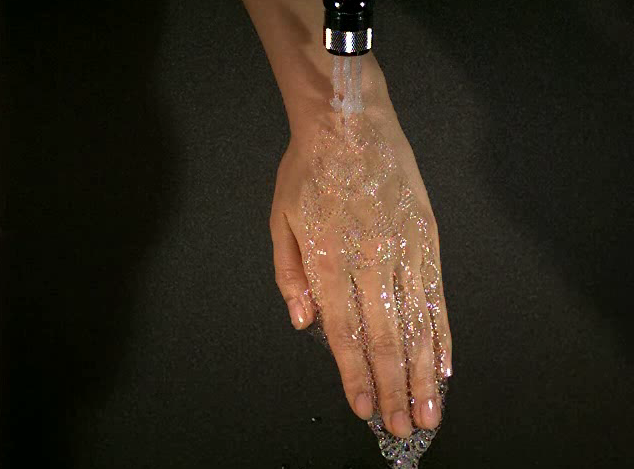
 Internet reacts with confusion to Muji’s new fill-it-up-yourself water bottle product
Internet reacts with confusion to Muji’s new fill-it-up-yourself water bottle product Tokyo Police shows a clever way to conserve water in a disaster and impress children with magic
Tokyo Police shows a clever way to conserve water in a disaster and impress children with magic Peach juice served fresh out the tap at Mt. Fuji Shizuoka Airport
Peach juice served fresh out the tap at Mt. Fuji Shizuoka Airport Tottori airport serves crab soup from a faucet and… Dammit Seiji, put down that plastic bottle!
Tottori airport serves crab soup from a faucet and… Dammit Seiji, put down that plastic bottle! City in Aichi reduces water and sewage bills for four months, easing residents’ financial strain
City in Aichi reduces water and sewage bills for four months, easing residents’ financial strain How to order snacks on a Shinkansen bullet train in Japan
How to order snacks on a Shinkansen bullet train in Japan Demon Slayer: Kimetsu no Yaiba gets new roller coaster attractions and food at Universal Studios Japan
Demon Slayer: Kimetsu no Yaiba gets new roller coaster attractions and food at Universal Studios Japan Hello, cosmetics! Clinique teams up with Hello Kitty this summer for first-time collaboration
Hello, cosmetics! Clinique teams up with Hello Kitty this summer for first-time collaboration High-fashion Totoro cuddle purse is like an elegant stroll in the forest【Photos】
High-fashion Totoro cuddle purse is like an elegant stroll in the forest【Photos】 Japan’s new difficult-to-drink-from beer glass protects your liver, but it’s a brutal experience
Japan’s new difficult-to-drink-from beer glass protects your liver, but it’s a brutal experience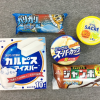 10 awesome ice cream and popsicle brands to try when you’re in Japan
10 awesome ice cream and popsicle brands to try when you’re in Japan Burger King Japan suddenly adds Dr. Pepper and Dr. Pepper floats to its menu nationwide
Burger King Japan suddenly adds Dr. Pepper and Dr. Pepper floats to its menu nationwide Video of man kicking, slapping deer in Nara Park outrages Japan【Video】
Video of man kicking, slapping deer in Nara Park outrages Japan【Video】 Nintendo history you can feel – Super NES, N64, and GameCube controllers become capsule toys
Nintendo history you can feel – Super NES, N64, and GameCube controllers become capsule toys 10 things you should buy at 7-Eleven in Japan
10 things you should buy at 7-Eleven in Japan “The most Delicious Cup Noodle in history” – Japan’s French Cup Noodle wins our heart【Taste test】
“The most Delicious Cup Noodle in history” – Japan’s French Cup Noodle wins our heart【Taste test】 Starbucks releases a cute Frappuccino and Unicorn Cake…but not in Japan
Starbucks releases a cute Frappuccino and Unicorn Cake…but not in Japan Kyoto Tower mascot termination reveals dark side behind cute Japanese characters
Kyoto Tower mascot termination reveals dark side behind cute Japanese characters McDonald’s Japan’s Soft Twist Tower: A phantom ice cream only sold at select branches
McDonald’s Japan’s Soft Twist Tower: A phantom ice cream only sold at select branches Yabai Ramen: What makes this Japanese ramen so dangerous?
Yabai Ramen: What makes this Japanese ramen so dangerous? Finally! Nintendo Japan expands Switch 8-bit controller sales to everybody, Online member or not
Finally! Nintendo Japan expands Switch 8-bit controller sales to everybody, Online member or not Japanese government wants to build luxury resorts in all national parks for foreign tourists
Japanese government wants to build luxury resorts in all national parks for foreign tourists To combat declining birth rate, Japan to begin offering “Breeding Visas” to foreigners
To combat declining birth rate, Japan to begin offering “Breeding Visas” to foreigners Studio Ghibli releases anime heroine cosplay dresses that are super comfy to wear
Studio Ghibli releases anime heroine cosplay dresses that are super comfy to wear Woman charged for driving suitcase without a license in Osaka
Woman charged for driving suitcase without a license in Osaka Studio Ghibli unveils My Neighbour Totoro miniature house model
Studio Ghibli unveils My Neighbour Totoro miniature house model Kyoto experiencing problems with foreign tourists not paying for bus fares, but not on purpose
Kyoto experiencing problems with foreign tourists not paying for bus fares, but not on purpose Fighting mild hunger with a Japanese soda that turns into jelly in the stomach【Taste test】
Fighting mild hunger with a Japanese soda that turns into jelly in the stomach【Taste test】 Studio Ghibli’s Howl’s Moving Castle tapestry unveiled in Japan for first time
Studio Ghibli’s Howl’s Moving Castle tapestry unveiled in Japan for first time McDonald’s new Happy Meals offer up cute and practical Sanrio lifestyle goods
McDonald’s new Happy Meals offer up cute and practical Sanrio lifestyle goods Sales of Japan’s most convenient train ticket/shopping payment cards suspended indefinitely
Sales of Japan’s most convenient train ticket/shopping payment cards suspended indefinitely Sold-out Studio Ghibli desktop humidifiers are back so Totoro can help you through the dry season
Sold-out Studio Ghibli desktop humidifiers are back so Totoro can help you through the dry season Japanese government to make first change to romanization spelling rules since the 1950s
Japanese government to make first change to romanization spelling rules since the 1950s Foreigner’s request for help in Tokyo makes us sad for the state of society
Foreigner’s request for help in Tokyo makes us sad for the state of society Ghibli founders Toshio Suzuki and Hayao Miyazaki contribute to Japanese whisky Totoro label design
Ghibli founders Toshio Suzuki and Hayao Miyazaki contribute to Japanese whisky Totoro label design Doraemon found buried at sea as scene from 1993 anime becomes real life【Photos】
Doraemon found buried at sea as scene from 1993 anime becomes real life【Photos】 Tokyo’s most famous Starbucks is closed
Tokyo’s most famous Starbucks is closed Princesses, fruits, and blacksmiths: Study reveals the 30 most unusual family names in Japan
Princesses, fruits, and blacksmiths: Study reveals the 30 most unusual family names in Japan Turning a crazy cheap country Japanese house into a home — Step 10: Mysterious water【SoraHouse】
Turning a crazy cheap country Japanese house into a home — Step 10: Mysterious water【SoraHouse】 Everything you think you know about your washlet toilet is wrong
Everything you think you know about your washlet toilet is wrong Hot spring in Gunma Prefecture found to reduce COVID-19 infectivity by over 90 percent
Hot spring in Gunma Prefecture found to reduce COVID-19 infectivity by over 90 percent Japan’s ‘agri-tech’ farming revolution
Japan’s ‘agri-tech’ farming revolution Japanese netizens puzzle over weird coronavirus crime — a theft of over 3,000 gallons of water
Japanese netizens puzzle over weird coronavirus crime — a theft of over 3,000 gallons of water Save time AND water by turning your shower into a bath with this nifty Japanese gadget
Save time AND water by turning your shower into a bath with this nifty Japanese gadget Traditional hot spring dance reminds us of locker room fights, 3rd degree burns
Traditional hot spring dance reminds us of locker room fights, 3rd degree burns How to have a Japanese rotenburo bath experience without leaving your home【Photos】
How to have a Japanese rotenburo bath experience without leaving your home【Photos】 Turn your water bottle into a Japanese toilet!
Turn your water bottle into a Japanese toilet! Four train stations in Tokyo installed free groundwater pumps available 24-7
Four train stations in Tokyo installed free groundwater pumps available 24-7 Emergency lifehack lets you wash away shampoo without using a shower head
Emergency lifehack lets you wash away shampoo without using a shower head Soup not soap: Japanese public bathhouses surviving by converting into retro-chic cafés
Soup not soap: Japanese public bathhouses surviving by converting into retro-chic cafés New hot natural spring water at 7-Eleven proves Japanese convenience stores really are convenient
New hot natural spring water at 7-Eleven proves Japanese convenience stores really are convenient Japanese museum dedicated to salmon have no live salmon on display this year
Japanese museum dedicated to salmon have no live salmon on display this year Seiji starts a new health regimen with Oronamin C, straight from a plastic bottle faucet
Seiji starts a new health regimen with Oronamin C, straight from a plastic bottle faucet Japan enchanted with kitties using head cones both to their advantage and to advance fashion
Japan enchanted with kitties using head cones both to their advantage and to advance fashion Japan government makes cute illustrated version of radioactive isotope it plans to dump into sea
Japan government makes cute illustrated version of radioactive isotope it plans to dump into sea
Leave a Reply